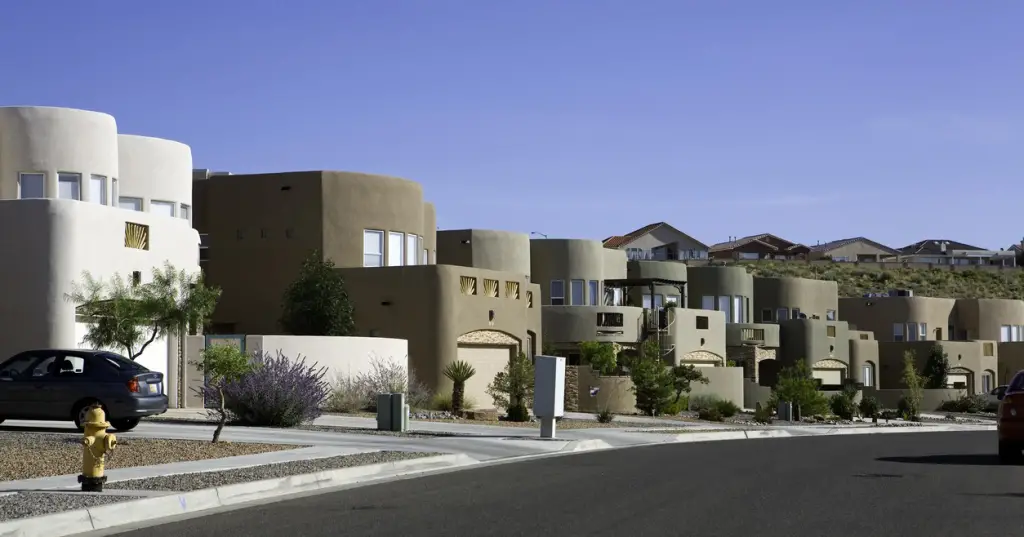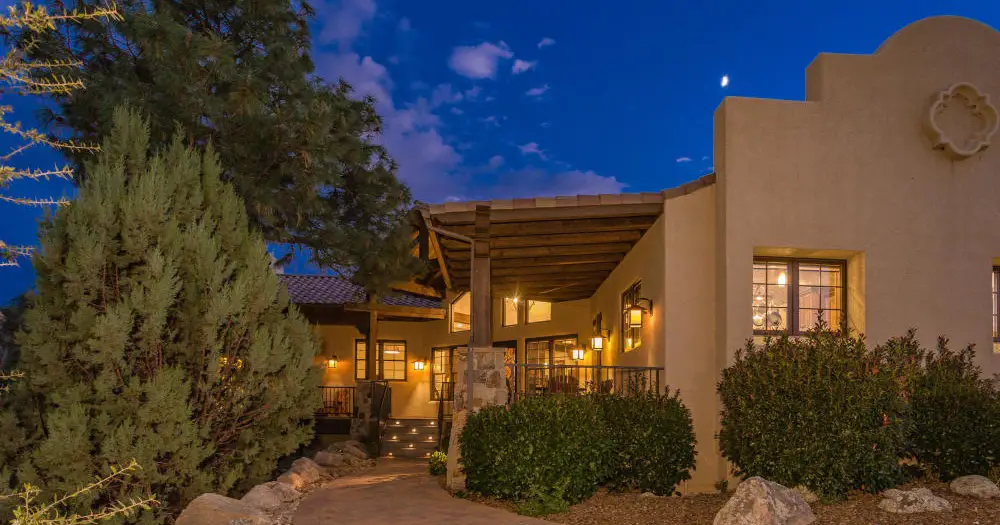In the heart of Arizona, Prescott stands as a beacon of historical preservation, primarily through its Adobe-style buildings. These structures are not just an architectural choice but a narrative of the city’s rich heritage and cultural evolution.
The Preservation of Prescott’s Adobe-style buildings is more than a conservation effort; it’s a commitment to protecting a legacy that defines the region’s identity.

This article explores the depth and breadth of this endeavor, delving into the history, significance, and challenges involved in sustaining these architectural treasures for future generations.
The History and Evolution of Adobe Architecture in Prescott
The story of Adobe architecture in Prescott is one of resilience and cultural synthesis. Initially built by indigenous peoples and early settlers, these structures were made from natural materials like earth and water, symbolizing a deep connection with the land.
Over the years, Adobe buildings evolved, mirroring the changing societal needs and environmental conditions. This evolution was particularly evident during the ‘Golden Era’ of the 19th and early 20th centuries when Prescott experienced a surge in Adobe construction.
This period marked a significant chapter in the city’s architectural narrative, blending traditional Adobe techniques with new influences. However, in contemporary times, these historic structures face various challenges, from environmental degradation to urban development pressures, threatening their existence and necessitating urgent preservation measures.
Understanding the Architectural Significance of Adobe Buildings
To fully grasp the importance of preserving Prescott’s Adobe buildings, it’s essential to understand their unique architectural features. Adobe construction is characterized by sun-dried bricks, thick walls, and flat roofs, which contribute not only to the buildings’ aesthetic appeal but also to their durability and climate adaptability.
Prescott’s Adobe style is particularly notable for its blend of Native American and Spanish influences, evident in the design and detailing of these structures. This architectural style stands in stark contrast to other historical styles like the ornate Victorian or the minimalist Modernist, offering a unique perspective on sustainable and organic architecture.
The Cultural Significance of Adobe Buildings in Prescott
The Adobe buildings of Prescott are not merely structures of mud and straw; they are emblematic of the city’s cultural tapestry. These buildings serve as a physical manifestation of Prescott’s history, reflecting the diverse influences that have shaped the region.
They stand as symbols of a bygone era, offering a window into the past for both residents and visitors alike. This deep cultural significance is why their preservation is seen not just as a duty to history but as an ongoing commitment to maintaining the community’s identity.
The impact of these Adobe buildings on local culture and community identity is profound. They are not just landmarks but also repositories of stories and traditions that resonate with the people of Prescott.
The community’s attachment to these buildings goes beyond mere aesthetics; it’s about preserving a sense of belonging and continuity. This attachment is particularly evident during local festivals and events, where these buildings often serve as focal points, reinforcing their role in community life.
The Science of Adobe Preservation
Preserving Adobe buildings is a complex science that requires a deep understanding of the materials and techniques used in their construction. Adobe, as a building material, is unique in its properties, demanding specific conservation methods.
The process involves not only repairing the visible damage but also ensuring the structural integrity and longevity of the buildings. This often includes addressing issues like moisture control, thermal stability, and seismic reinforcement, which are critical in maintaining these structures.
Modern innovations in Adobe restoration have introduced new techniques and materials that complement traditional methods while enhancing the buildings’ durability.
These advancements are crucial in addressing the unique challenges posed by Adobe preservation, such as dealing with climate impacts and adapting to modern building codes. The goal is to strike a balance between preserving the historical authenticity of these structures and equipping them to withstand contemporary challenges.
The preservation of Prescott’s Adobe buildings is intricately tied to the legal and regulatory framework that governs historic preservation. These laws and regulations are critical in safeguarding these structures from inappropriate alterations or demolitions.
Understanding this legal landscape is essential for anyone involved in the restoration of historic buildings. In Prescott, both local and national heritage organizations play a pivotal role, offering guidelines and support for preservation efforts.

Navigating these regulations requires a careful balance between respecting historical integrity and meeting modern standards, a challenge that often requires expert legal and architectural guidance.
The Role of Community and Education in Preservation Efforts
Community involvement and education are cornerstones of successful preservation efforts. Grassroots movements have proven instrumental in raising awareness and garnering support for the preservation of Adobe buildings.
These movements often lead to the formation of local preservation groups, which play a vital role in lobbying for protection and funding. Educational programs, too, are key in fostering a deeper understanding and appreciation of Adobe architecture among the public.
By engaging the community through workshops, tours, and events, these programs help to cultivate a sense of stewardship and a collective responsibility to preserve these historic treasures.
The Economic and Environmental Impacts of Preservation
Preserving Adobe buildings also has significant economic implications. Restoration projects can stimulate local economies by creating jobs and attracting tourism.
Moreover, financial incentives, such as grants and tax credits, are often available for those undertaking preservation projects, making them more feasible. The economic benefits extend beyond the immediate restoration efforts, contributing to the overall vitality of the community.
Equally important is the environmental aspect of Adobe preservation. Adobe buildings are inherently sustainable and made from natural, locally sourced materials. Their thick walls provide excellent insulation, reducing the need for artificial heating and cooling.
In today’s context, where environmental sustainability is a global concern, preserving these structures aligns with eco-friendly practices. The challenge lies in integrating modern green technology with traditional building methods, ensuring that preservation efforts are both environmentally responsible and historically authentic.
Emerging Trends and the Future of Adobe Preservation
As we step into the future, the field of historical preservation, especially for Adobe buildings, is witnessing emerging trends that blend traditional wisdom with modern technology. One significant trend is the use of advanced materials and techniques that complement the original Adobe construction while enhancing durability and resilience.
There’s also a growing emphasis on using digital tools for preservation, such as 3D scanning and modeling, which help in accurately documenting and restoring these historic structures.
Predictions for the next generation of Adobe buildings are optimistic. They suggest a revival of Adobe construction, not just as a nod to historical aesthetics but as a viable, eco-friendly building option.
This resurgence is likely to be driven by a heightened awareness of sustainability and a renewed interest in traditional building methods. The role of technology in future preservation efforts cannot be overstated.

Innovations in material science and construction techniques are expected to play a key role in ensuring that Adobe buildings can withstand modern-day environmental and structural challenges while retaining their historic charm.
Frequently Asked Questions
Before concluding, let’s address some common questions about the preservation of Prescott’s Adobe-style buildings:
What makes Adobe buildings unique in Prescott’s architecture?
Adobe buildings in Prescott stand out for their earthy materials, thick walls, and distinct aesthetic that reflects a blend of Native American and Spanish influences.
How can individuals contribute to the preservation of these structures?
Individuals can contribute by supporting local preservation groups, participating in educational programs, and advocating for the protection of these historic buildings.
What are the biggest challenges facing Adobe preservation today?
The major challenges include environmental degradation, adapting to modern building codes, and balancing historical authenticity with contemporary needs.
Are there any upcoming preservation projects or initiatives in Prescott?
For current projects and initiatives, interested individuals should consult local preservation societies and municipal websites for the most up-to-date information.
Conclusion
The preservation of Prescott’s Adobe-style buildings is a multifaceted endeavor that intertwines historical appreciation, cultural identity, and modern-day challenges. By understanding the history, architecture, and significance of these structures, we gain insight into the importance of preserving them.
The journey of preserving these buildings is not just about maintaining old structures; it’s about honoring a legacy that shapes Prescott’s identity.
As we move forward, it’s crucial to embrace both the challenges and opportunities presented in preserving these architectural treasures, ensuring they continue to stand as testaments to the city’s rich heritage for generations to come.



Leave a Comment
You must be logged in to post a comment.